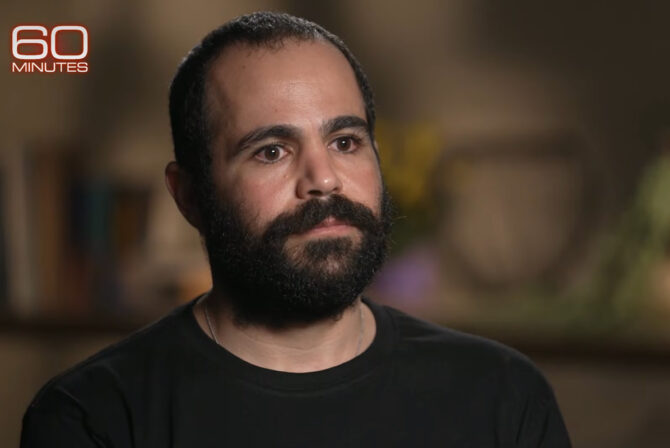When I mentioned recently that we were planning to visit the cemetery where my father is buried, my 6-year-old asked if we could “dig him up.” I smiled and explained to him that once a body is buried, it stays buried. He asked: “Is your dad a skeleton? Is he dust?” “A skeleton, probably,” I told him, though I wasn’t quite sure. My son considered that for a moment. Then he returned to the Lego seaplane he was building, and I breathed a sigh of relief that I didn’t have to wade further into the matter.
When it comes to the topic of death and dying, kids have a lot of questions that parents (myself included) feel ill-equipped to answer honestly, yet without provoking undue fear. It’s a balancing act, to be sure, but there’s a whole body of children’s literature out there that can help. I recently surveyed picture books, as well as middle-grade and YA novels about end-of-life and loss and compiled my favorites by category here.
BEST OVERALL
And Every Morning the Way Home Gets Longer and Longer
by Fredrik Backman
(Ages: 8-12)
This lyrical novella is told from the perspective of an old man grieving twice over: once for his late wife and again for his slowly deteriorating mind. For years, the man has been teaching his grandson, Noah, all about science, math, and geography. But now, as dementia sets in—it “starts with keys and ends with people,” he explains—Grandpa instructs Noah how to say goodbye. “Almost all grown adults walk around full of regret over a goodbye they wish they’d been able to go back and say better,” Grandpa tells Noah. “Our good-bye doesn’t have to be like that, you’ll be able to keep redoing it until it’s perfect. And once it’s perfect, that’s when your feet will touch the ground and I’ll be in space, and there won’t be anything to be afraid of.”
With this book, Backman, a Swedish author of international bestsellers, reminds readers that those we mourn at the end of their lives have likely stood where we are now: grieving someone else’s final moments and clinging to memories so long as they last.
BEST FOR PRESCHOOLERS
The Memory Tree
by Britta Teckentrup
(Ages: 3-6)
When “Fox closed his eyes, took a deep breath and fell asleep forever,” his friends from the forest gather to memorialize him. At first, they sit in silence; then, they share their cherished memories aloud. Bear remembers how Fox had on occasion looked after her cubs. Mouse recalls that Fox loved to watch the sunset. Exactly the type of everyday kindnesses and affirmations that tend to stay with us.
As the animals exchange stories, a small orange tree takes root in the snow—eventually growing and blooming and sheltering the animals in its midst. “The tree gave strength to everyone who loved Fox,” Teckentrup writes. “And so Fox lived on in their hearts forever.” For parents looking to broach the topics of death (people or pets), grief and the kind of love that transcends a lifetime, this enchanting book is a good place to start.
MOST COMPREHENSIVE
When Dinosaurs Die
by Laurie Krasny Brown and Marc Brown
(Ages: 4-9)
It’s hard to think of a question young children might have about death and grief that isn’t answered in these pages. When Dinosaurs Die explains what it means to be alive, what it means to be dead, and what humans (or in this case, bipedal green dinosaurs who wear clothes and drive cars) might be experiencing when someone they love dies. Sad, angry, lonely, scared — the book reassures readers that “there’s no right or wrong way to feel.”
Dinosaurs gets more specific than its peers — wading into specific causes of death, from illness to neonatal death to accidents, and even touches on suicide and homicide. “Sometimes lives are lost violently, such as when someone kills someone else,” the authors explain. “It may be in war or for reasons that are very hard to understand, such as poverty, prejudice, and drug abuse.” (Skip what you don’t yet feel comfortable sharing.) I love this book’s straightforward explanations and sample conversations. A young dinosaur asks: “Will I get sick and die like cousin Boris?”And her mother answers: “A healthy kid like you? Not likely.”
BEST REISSUE
The Dead Bird
by Margaret Wise Brown
Illustrations by Christian Robinson
(Ages: 3-6)
You’re probably (OK, definitely) familiar with the work of Margaret Wise Brown, the author of Goodnight Moon and The Runaway Bunny. But before those classics were published, Brown wrote a children’s book about loss. Her 1938 story Dead Bird got new life in 2016, when it was reissued with quirky new illustrations.
Four young children happen upon a dead bird in what looks to be Central Park in New York. They dig a grave, and they bury the bird. They cover the grave with ferns and flowers, and they sing. “Then they cried because their singing was so beautiful, and the ferns smelled so sweetly and the bird was dead,” Brown writes, and in so doing, highlighting how we are alive in our grief. Of course, I have to quiet the Jewish mother in me that says, “Hey, kids, probably best not to pick up dead birds or hang out alone in Central Park.” It’s a sweet read, though, and a good entrée into parent-child conversations about caring for those we love and for those we never had a chance to get to know.
BEST MIDDLE-GRADE/YA
The Thing About Jellyfish
by Ali Benjamin
(Ages: 10-14)
Suzy Swanson and Franny Jackson were BFFs for years before Franny clicked with the pretty, “popular” girls and unclicked with her science-minded, socially awkward friend. Suzy is counting on a reconciliation, but then Franny dies during her beach vacation just before the beginning of seventh grade. Unable to accept her mother’s explanation that even strong swimmers can drown, 12-year-old Suzy becomes convinced that Franny had been stung by a deadly Irukandji jellyfish.
Suzy—once talkative, now silent—sets out to learn everything she can about jellyfish: They are older than dinosaurs. They can grow younger. There are 150 million jellyfish stings a year, the frightening equivalent of 23 stings every five seconds. Ali Benjamin’s charming debut novel highlights the things that can complicate loss: unresolved anger, unspoken apologies, or unanswered questions. Grief can feel unbearable, or as Suzy puts it: “Sometimes you want things to change so badly you can’t even stand to be in the same room with the way things actually are.” Exactly.
BEST ABOUT CURRENT EVENTS
The Journey
by Francesca Sanna
(Ages: 3-7)
A conflict resembling the Syrian Civil War descends on a seaside city that is home to a young couple and their two children. One day, the beach is no longer safe; the next there’s “nothing but chaos.” Then war kills the children’s father, and as the young narrator explains, “since that day everything has become darker and my mother has become more and more worried.” The family leaves home and seeks refuge in “a country far away with high mountains.”
The Journey follows their arduous trek—disguised by the mother as “a great adventure.” They are still migrating when the book ends. There’s is no happily-ever-after, but there is hope that one day, like the birds above, the family will find “a home where we can be safe and begin our story again.” The story, which is accompanied by whimsical jewel-toned illustrations, highlights how grief can be followed closely by other painful and dramatic changes, and also how resilient children are in their wake.
BEST CLASSIC
Charlotte’s Web
by E.B. White
(Ages: 8 and up)
For generations of children, Charlotte’s Web has served as an introduction to the literature of death and dying—often accompanied by a first realization that words on a page can stir emotions deep from within. (It was the first book that made me cry.) For the uninitiated, Charlotte’s Web is the story of a young pig named Wilbur, who befriends a well-mannered spider named Charlotte.
When Wilbur learns that he is being fattened up to be sent to the slaughterhouse, Charlotte vows to save him. She does this by weaving messages into her web, letting the farmer know just how special Wilbur is. Charlotte tells her friend “I wove my webs for you because I liked you. After all, what’s a life anyway? We’re born, we lie a little while, we die. A spider’s life can’t help being something of a mess with all this trapping and eating flies. By helping you perhaps I was trying to lift up my life a trifle.” This timeless read, first published in 1952, teaches of love and loyalty, of life and death—and the limits of those two things.
BEST PLOT TWIST
The Ethan I Was Before
by Ali Standish
(Ages: 8-12)
An accident leaves Ethan Truitt’s best friend, Kacey, in a coma. Ethan is convinced that it’s all his fault, after a game that the two played innocuously a hundred times before goes terribly wrong. After the title character’s repeated attempts to run away from his Boston home, his family decides to move to a place where Ethan “can pretend to be a normal kid.” But shame follows him to his new middle school in Palm Knot, Georgia. “Dr. Gorman would say that I haven’t really abandoned [Kacey], but I have stopped thinking about her all the time, which is almost the same thing,” Ethan explains. There’s also a strong subplot involving a mysterious new friend he makes in Palm Knot. This YA novel is about the intersection of guilt and grief, about what we hold onto, what we let go of, and how to say goodbye to the person we imagined at our side always.
BEST JEWISH THEME
A Different Kind of Passover
by Linda Leopold-Strauss
Illustrated by Jeremy Tugeau
(Ages: 4-8)
Jessica is headed to her grandparents’ apartment for a family seder, which for as long as she can remember has always been just about the same. This year, though, things are going to be different—and not just because Jessica is planning to read the Four Questions in Hebrew for the first time. Grandpa is sick—just back from the hospital and too weak to join them everyone at the seder table.
Jessica is sad and disappointed until she and her family come up with creative ways for Grandpa to participate in the Passover festivities. This tender and earnest PJ Library story reminds us that including those who are ill or at the end of their lives in holiday festivities is limited only by our imaginations. Things change, and while we can’t always control them, we can rejoice in our time together, in whatever form, for however long.
MOST BEAUTIFUL
My Father’s Arms Are a Boat
by Stein Erik Lunde
Illustrations by Øyvind Torseter
(Ages: 4 and up)
The illustrations in this Norwegian children’s story are a sight to behold, resembling layered paper cutouts—with splashes of color for effect. The tale itself is more nuanced than many of the other books on this list. It’s ostensibly about a little boy who can’t sleep. When he wanders into the living room, he talks to his father about the red birds and the fox and the giant spruce tree that they plan to chop down tomorrow. Then, they talk about how “Mommy’s asleep.” “She’ll never wake up again?” the little boy asks. “No, not where she is now” the father answers, and then suggests they go outside to look at the stars. While outside, father and son make silent wishes on the shooting stars. When they go back inside, the boy is tired, but he still can’t sleep. His father, grieving in his own right, provides reassurance—buoying them both in the process.

This post is part of a series supported by MJHS Health System and UJA-Federation of New York to
raise awareness and facilitate conversations about end of life care in a Jewish context.
To learn more about the role of hospice and its value to patients and families click here.

















